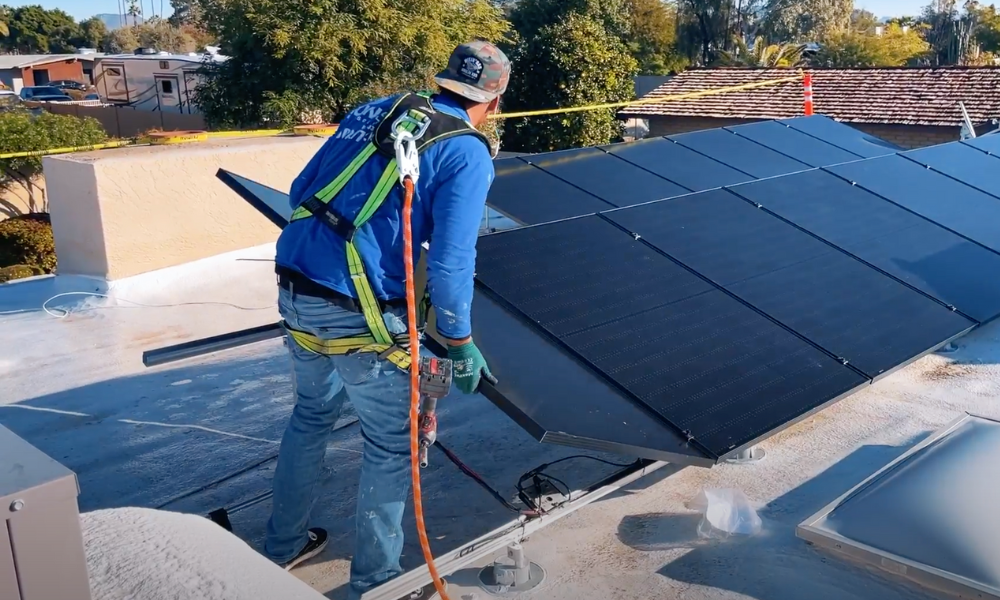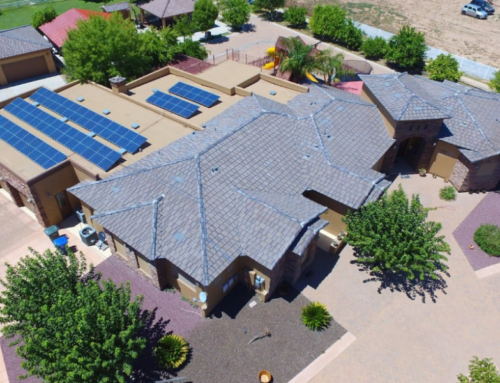By Erick O’Donnell
“Two steps forward, one step back,” such is the nature of progress in a democracy, where competing interests and opinions inevitably come in conflict. This expression can help stave off pessimism by keeping one’s focus on the long term.
For the people rooting for America’s clean-energy revolution (including us, of course), that makes it an especially useful metaphor to keep in mind after a big defeat for solar power. Such a defeat occurred earlier this month in Arizona, where the state’s utility regulator voted to sharply reduce how much utilities must pay customers for the surplus energy produced by their solar panels.
Make no mistake, though; the decision in California is a big step backward for solar energy in America. In fact, the reduction, part of a policy package called Net Energy Metering 3.0, is the largest such cut in American history. Effective April 15, it slashes what owners of new rooftop solar systems get for their surplus power by 73%, from an average of 30 cents per kilowatt-hour to 8 cents. Many public commenters opposed the move, according to local reporting.
It’s not hard to see why. A state’s buyback rate is essential to the financial viability of distributed solar power and determining whether the purchase of a system represents a logical investment for a household. A similar rate cut in Nevada in 2016 caused the pace of new installations to plunge by 90% in the following years. The Solar Energy Industries Association told the commission the proposed cut would put solar energy out of financial reach for millions of Arizona homeowners.
From tax cuts to vehicle emissions standards, Arizona’s policy changes have historically spawned waves of similar experiments in other states, which makes this policy regression even more ominous than the state’s gargantuan size alone would make it. For better or for worse, Arizona’s experiments are hugely influential, so it will be crucial for solar-power advocates to speak up against the influence of this decision before it spreads to other states. Luckily, the facts about solar power are on our side.
Arizona’s electric utilities won this concession from their regulator by arguing that the state’s one-to-one buyback rate (paying system owners the same amount for their surplus energy as the utility charges) fails to account for the grid’s fixed costs, thereby shifting costs to ratepayers who don’t own solar systems.
That’s the same argument, by the way, that won similar cuts in other states, including this one. In Arizona, the price APS pays its customers for the power they export to the grid will drop by 10% on Sept. 1 from its current price of 8.5 cents, and it’s scheduled to drop by an additional 10% in each of the next several years on Sept. 1. Homeowners who go solar this year will be grandfathered into the 8.5-cent- per-kWh rate for 10 years. While not as steep a drop as the one scheduled to take place in California, it’s important for homeowners in Arizona to go solar as soon as possible to lock in the highest buyback rate.
But this idea does not stand up to scrutiny. As a review by the Brookings Institution explains, rigorous studies on this issue—whether commissioned by regulatory bodies or conducted independently by academics—point in the opposite direction, showing that distributed solar generation produces net benefits for ratepayers and society when all costs, and benefits are factored in.
“Net-metered systems do not impose a significant net cost to ratepayers who are not net-metering participants,” declared a study by Vermont’s utility regulator. The agency further described the state’s net-metering policy as a successful part of Vermont’s strategy for converting its energy base to renewable sources.
In 2014, only two years before Arizona’s utility regulator ended net metering, it concluded that the one-for-one compensation policy conferred $36 million worth of financial benefits to all customers of AZ Energy, not just solar system owners. It further concluded that rooftop systems would save money for the grid by reducing the need for expensive upgrades, estimating total lifetime savings at $166 million over the lifetime of systems installed through 2016.
The same year, Minnesota’s regulator determined, based on a comprehensive assessment of all societal benefits of the technology, that the overall value of solar power exceeded its retail price. Those benefits include the avoided costs to society of fossil-fuel use, as well as the eliminated need for new power stations and the displacement of more expensive power sources.
Other state-sponsored studies have yielded similar results, according to the Brookings Review. An analysis by the Lawrence Berkeley National Laboratory determined that, while net metering would have only a “relatively modest” effect on ratepayers, it could reduce earnings for the shareholders who own the for-profit utilities.
That last detail is interesting, considering these companies’ well-known penchant for guarding their profits through political means. The Energy and Policy Institute reported earlier this year that, between 2008 and 2021, more than 70 investor-owned utilities contributed more than $61.6 million to a set of political-influence groups—known as Section 527 organizations—at the state level. Investigative reports, meanwhile, have described in detail the influence-peddling role played by these groups, detailing how they arrange private policy discussions over matters of public interest, including the states’ clean-energy plans. Given the pervasiveness of this practice, it makes sense for all ratepayers (whether they believe in clean energy or not) to ask themselves: are my state’s energy policies being decided in my interest?
Whatever the answer to that question, there are actions you can take today that are in your interest as an energy consumer, and one of those actions is to become an energy producer. So, call SUNSOLAR SOLUTIONS today at 623-562-9009 or get started by trying our FREE Solar + EV Calculator!







